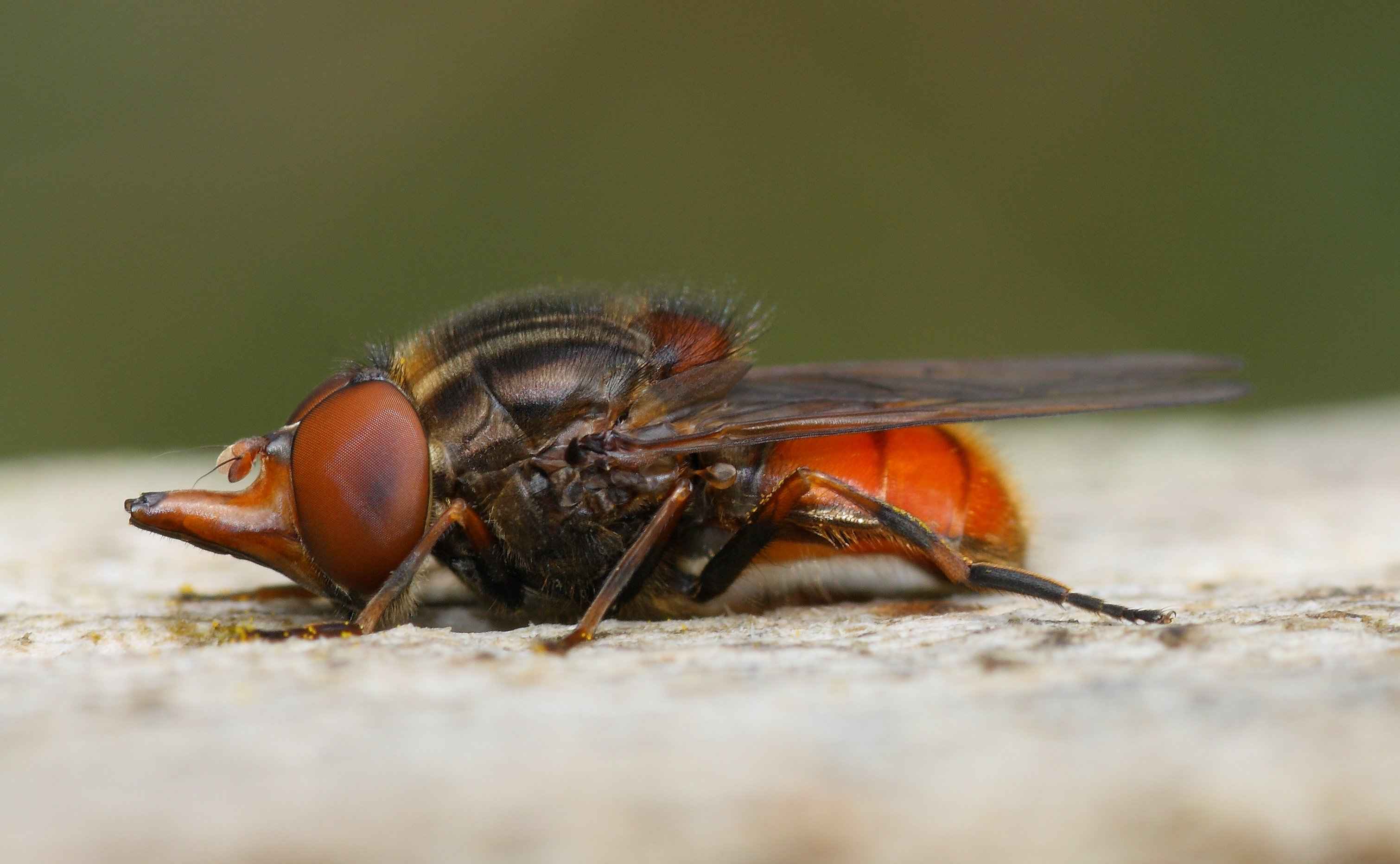DESCRIPTION: Length 7 - 12mm. A distinctive species with only one similar relative. The duck-billed look of the snout, the gingery abdomen with black median line along the sides, the black and grey striped thorax that is extremely hairy and the black and orange legs make this and instantly recognisable Hoverfly. The snout is in fact a protective beak that holds the long proboscis which can be seen when the fly is cleaning itself. BEHAVIOUR: Can be seen flitting around dense undergrowth and resting on fences in hot conditions. They can be found quite a way from possible breeding sites. Feeds on Bluebell, Bugle and Ground-ivy, which their long mouth-parts can gain access to. The larvae can be located in cow dung. DISTRIBUTION: Very common throughout Britain except in the far north. HABITAT: Near to hedgerows, woodland edges. PERIOD: March to November.
|
